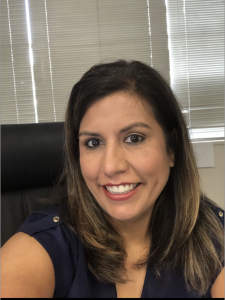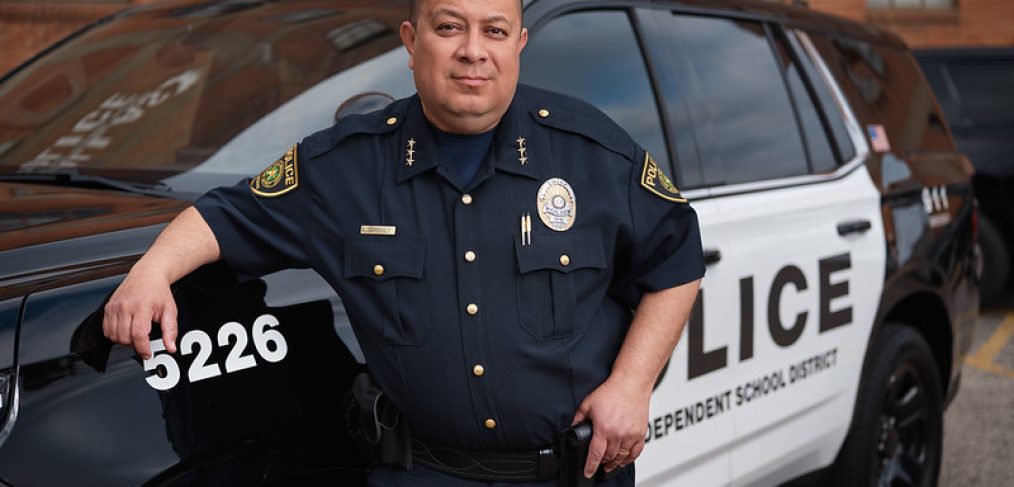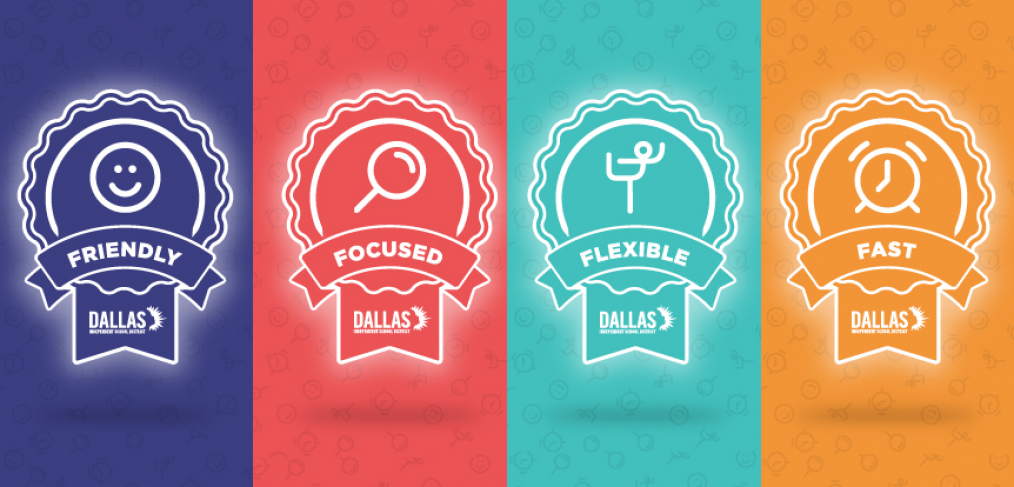In the almost 25 years that Christine Martinez has been with Dallas ISD, she has become known for being a resourceful leader who is always willing to help others by leading with kindness. In her latest role as an administrative assistant with Custodial Services, she has become an advocate for the inclusion of custodians’ voices and contributions, making sure that they are honored as vital parts of the Dallas ISD team.
Martinez began her journey in the district as a registrar at Edward H. Cary Middle School, which closed in 2019 after a devastating tornado caused extensive damage to the school. The kindness for which she is known was in evidence at the time as the event turned her school community upside down. Not only did Martinez work at Cary, but she was also a graduate of Thomas Jefferson High School, another school severely damaged by the tornado.
After the tornado, and working on different campuses—Pancho Medrano Junior High, Ben Franklin International Exploratory Academy, and Thomas Jefferson High School—following the school’s closure, the 2020 pandemic struck. That’s when she saw the opportunity to make a bigger impact in Custodial Services.
Since she started working there, Martinez has lived by what is this year’s theme for Women’s History Month: “Women who advocate for equity, diversity, and inclusion.” 
“Our custodial staff is very important to student success,” she said. “They play multiple roles, they help the teachers move their equipment, they clean the floors, they make sure we have access to essential items like paper towels.”
“They keep students and team members healthy by making sure the buildings are clean and disinfected,” she added. “Especially when we had the pandemic, everyone else got to stay home and they were there at the buildings disinfecting them.”
On Oct. 2, during National Custodian Day, Martinez makes sure that her fellow team members feel honored and appreciated. For the past three years, she has helped organize the different ways that custodians have been honored, such as ordering t-shirts for every custodian on campus, and giving them other swag items. Martinez has helped with the coordination as well as the creative aspect, such as helping design the t-shirts.
Although Martinez is no longer working on a campus, she still considers her co-workers from Cary a part of her extended family and stays in contact with them. She said they get together every so often in person and stay in touch through social media for events like weddings, birth announcements, and so on.
“Cary Middle School was my home. I spent more time there than I actually did where I’m paying my mortgage,” Martinez said.
Despite the challenges of the school closing because of the tornado, which Martinez described as crushing, she was able to find the silver lining, as it led her to her current position at Custodial Services, which she absolutely loves. In addition to her role at Custodial Services, Martinez works at Alfred J. Loos Sports Complex. After she finishes her regular work day, she works as the acting manager at Loos, where she coordinates everything from games to special events.
She makes sure that they are staffed for the games, including the ticket sellers and referees, having microphones, etc. She does the paperwork to make sure the referees are paid, and she’s there for the duration of an event, just in case something happens, says Martinez.
“I meet a lot of different people, not just within the district, but our parents. They come out every week for their events and they get to see you and you run into them at the grocery store and in the community,” Martinez said.
Like her times at Cary, Martinez continues to build connections with students, families, and community members. Martinez builds those connections everywhere she goes and is often encouraging others to work for the district, where she has met lifelong friends.
“I’m always always encouraging people to get in with the district. I tell them ‘find your home, find your place,’” Martinez said. “Of course, not everybody’s going to find the right match the first time. They can work at a school or in a central office, or anywhere. My advice is to keep trying.”
“I have just been one of the lucky ones.” she said. “I had found my home at Cary, but I also found my home when I started working here at Custodial Services.”

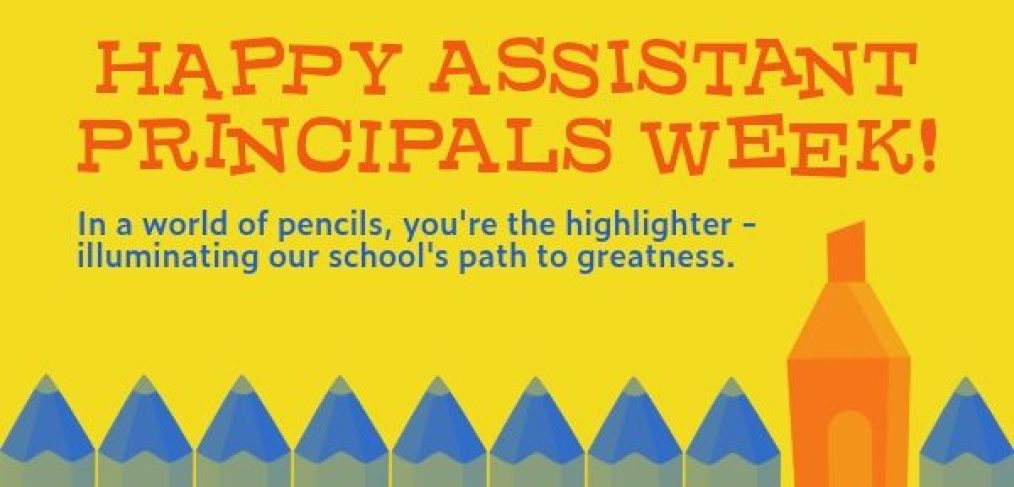
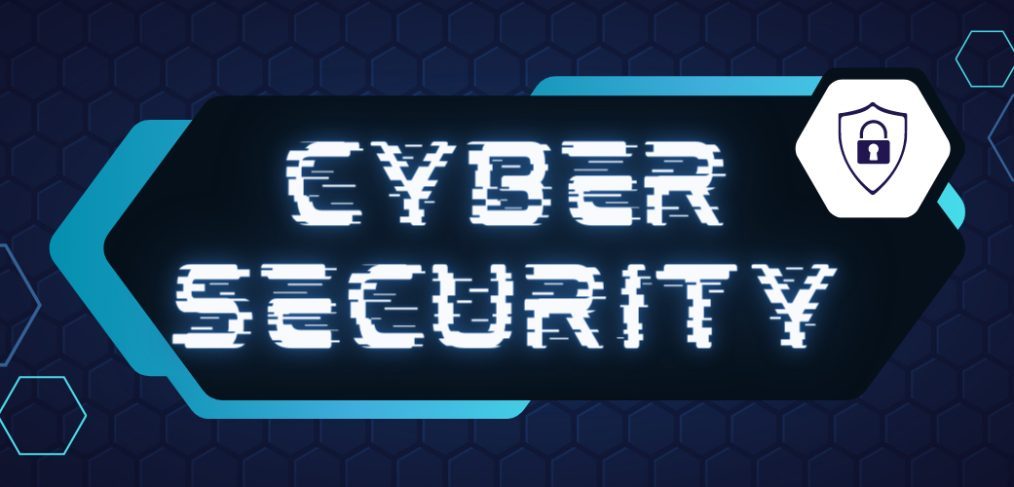
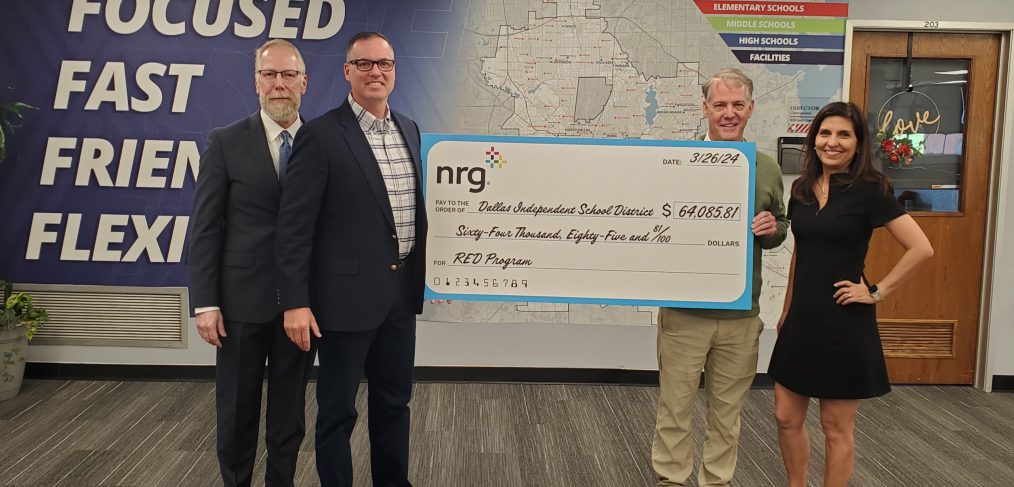
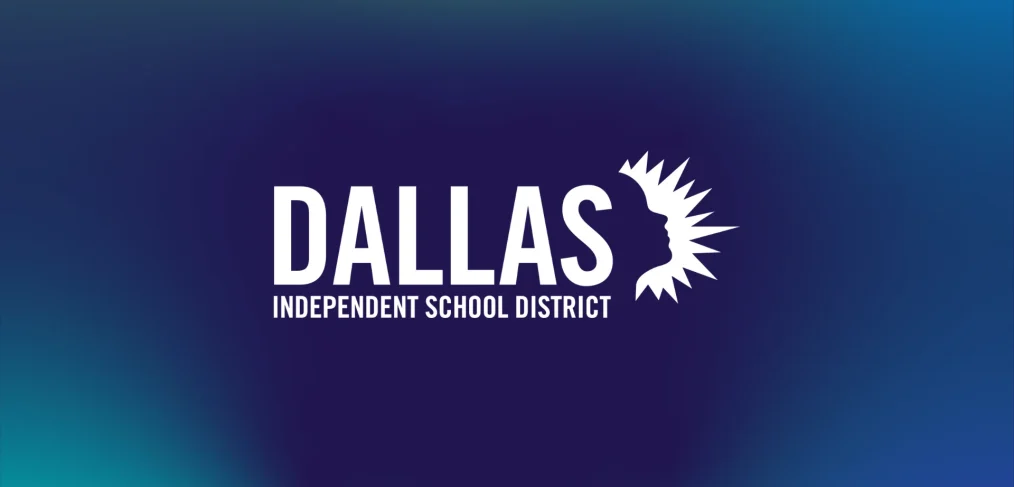

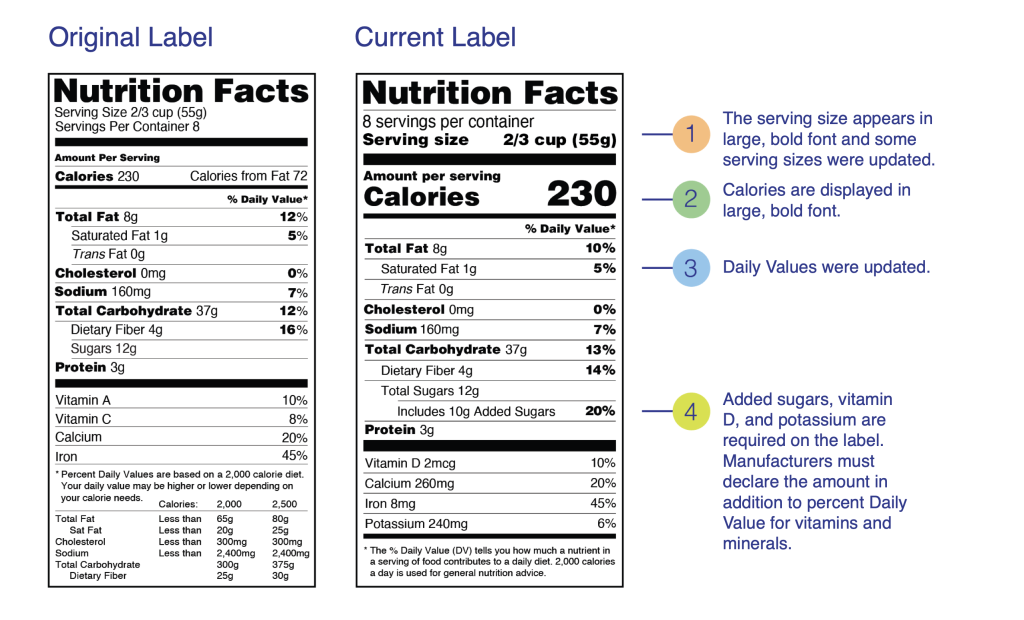 Foods with more than one ingredient must have an ingredient list on the label. Ingredients are listed in descending order by weight. Those in the largest amounts are listed first. This information is particularly helpful for people with food sensitivities or allergies, those who need to avoid certain ingredients due to religious reasons, or people who prefer a vegetarian eating style.
Foods with more than one ingredient must have an ingredient list on the label. Ingredients are listed in descending order by weight. Those in the largest amounts are listed first. This information is particularly helpful for people with food sensitivities or allergies, those who need to avoid certain ingredients due to religious reasons, or people who prefer a vegetarian eating style.
